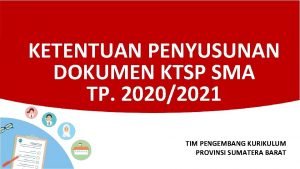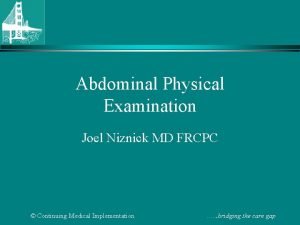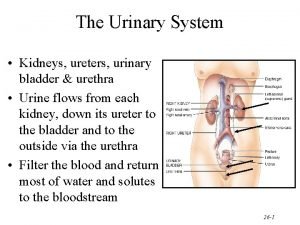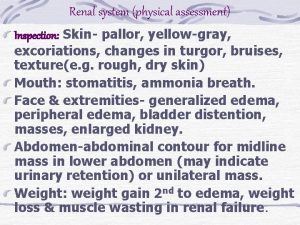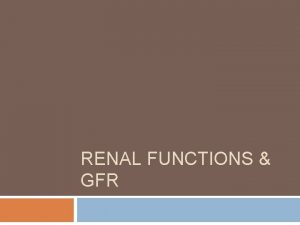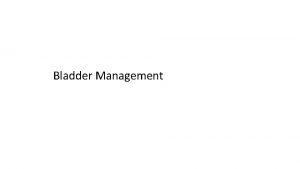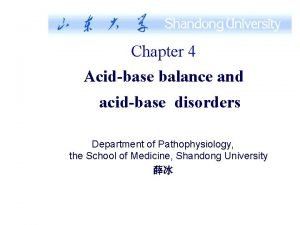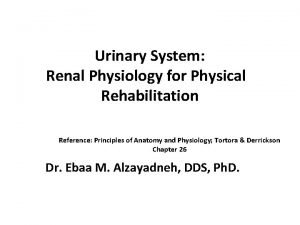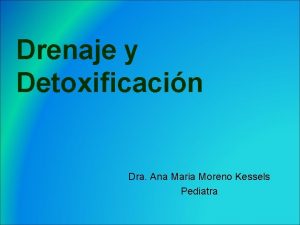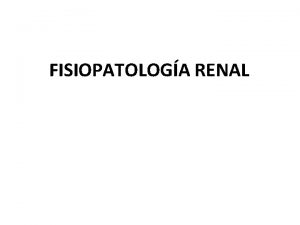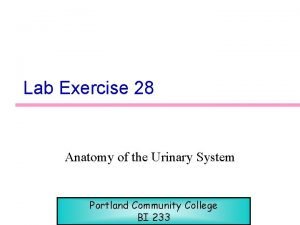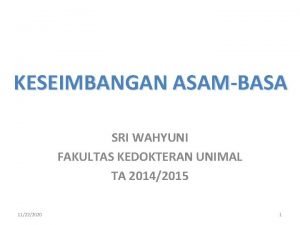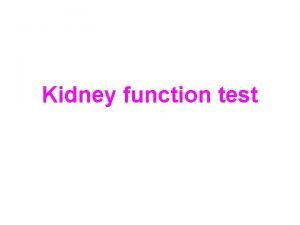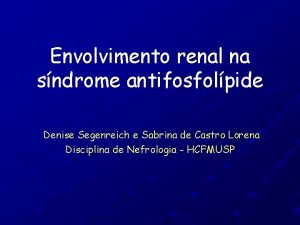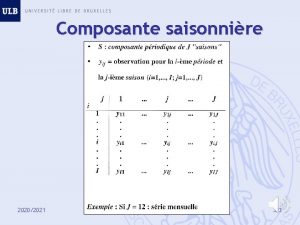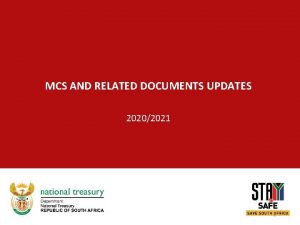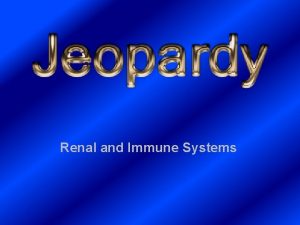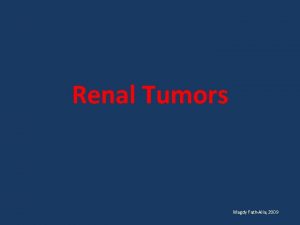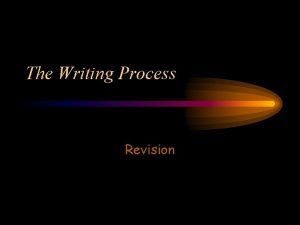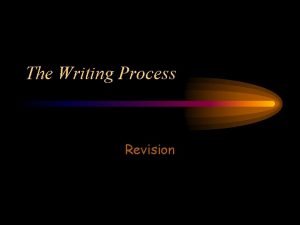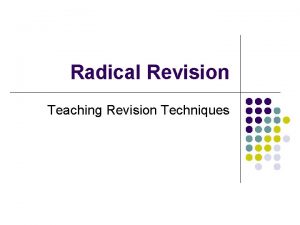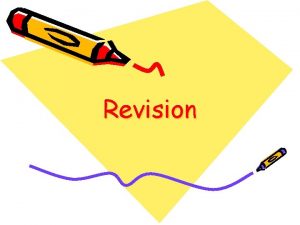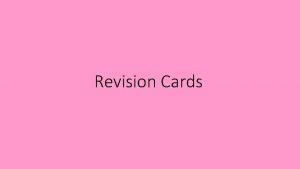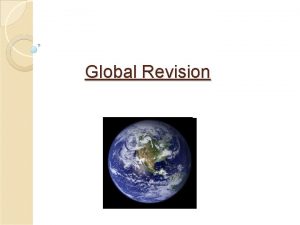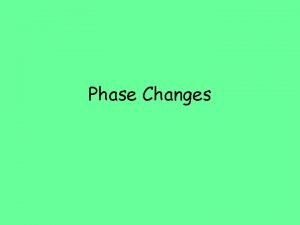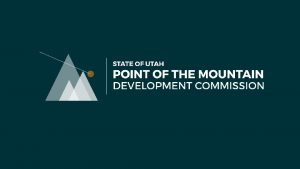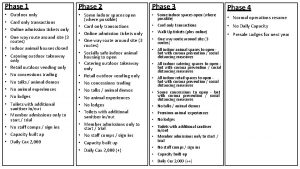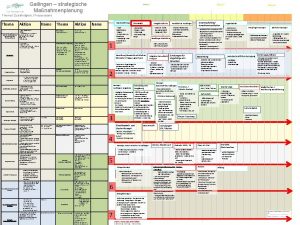20202021 PHASE 1 RENAL Phase 1 Renal Revision































- Slides: 31

2020/2021

PHASE 1 RENAL Phase 1 Renal Revision Session Shadha Shabani 19. 05. 21 The Peer Teaching Society is not liable for false or misleading information…

Functions of kidney 1. Regulation of water, ions and acid-base balance 1. Removal of metabolic waste products and foreign chemicals from blood and excretion in urine 1. Gluconeogenesis (synthesis of new glucose) 1. Production of enzymes/hormones: - EPO (controls RBC production) - renin (controls production of AGII) - active vitamin D (25 -hydroxyvitamin D —> 1, 25 -dihydroxyvitamin D) The Peer Teaching Society is not liable for false or misleading information…

Gross anatomy of the kidneys • • 2 kidneys Retroperitoneal Left kidney’s hilum is located at L 1 & right kidney at L 1 -2 — right kidney sits below the left because of the liver above it Surrounded by protective CT capsule Divided into outer renal cortex & inner renal medulla Medulla is divided into renal pyramids, at apex= renal papilla Papilla of renal pyramids calyces (about 6 -10 of these) that drain urine into renal pelvis then into the ureter So urine goes from medulla aka renal pyramids -> via papilla into calyces -> ureter -> bladder for storage, then eliminated from body via urethra The Peer Teaching Society is not liable for false or misleading information…

Blood supply of kidneys • • Hilum: where the nerves, ureter and vessels enter and exit the kidney RA supplies kidneys, RV drains The Peer Teaching Society is not liable for false or misleading information…

Structure of nephron The Peer Teaching Society is not liable for false or misleading information…

Filtration and GFR Blood in glomerulus is separated from fluid in bowman’s capsule by filtration barrier composed on 3 layers: 1. fenestrated capillary endothelium 2. negatively charged basement membrane (made of T 4 collagen) 3. foot processes of podocytes The Peer Teaching Society is not liable for false or misleading information…

Filtration and GFR 3 basic renal processes: 1. Glomerular filtration 2. Tubular reabsorption 3. Tubular secretion Amount of substance excreted= amount filtered + amount secreted - amount reabsorbed The Peer Teaching Society is not liable for false or misleading information…

Filtration and GFR 1. Glomerular filtration - bulk flow process 20% of plasma entering glomerular capillaries is filtered into Bowman’s space (remaining 80% goes out efferent arteriole) composition of glomerular filtrate: - no cells, - no large proteins, - small molecules and ions, - no negatively charged ions eg albumin - all plasma substances except proteins and anything bound to proteins in virtually same concentrations as in plasma The Peer Teaching Society is not liable for false or misleading information…

Filtration and GFR - - Forces involved in filtration: - GF is driven by hydrostatic pressure in glomerular capillaries - And is opposed by both the hydrostatic pressure in Bowman's space + osmotic force d/t proteins in glomerular capillary plasma Net glomerular filtration pressure is the sum of these 3 forces The Peer Teaching Society is not liable for false or misleading information…

Filtration and GFR - - - GFR (glomerular filtration rate)= volume of fluid filtered from glomeruli into Bowman’s space per unit time — determined by net filtration pressure, permeability of corpuscular membranes, surface area available for filtration — GFR is NOT a fixed value but regulated by neural and hormonal input to the afferent and efferent arterioles Normal GFR= 125 ml/min Creatinine (M) is used as a marker substance to estimate GFR bc it is freely filtered by glomerulus, not secreted or absorbed in tubules and not metabolised Renal Clearance = the volume of plasma from which a substance is completely removed from the kidney per unit time Creatinine is freely filtered at the glomerulus and is neither absorbed nor secreted in the tubule, so all of it ends up in the urine. Renal clearance of creatinine is 125 m. L/min (or equal to GFR)- this creatinine clearance is what is used to estimate GFR Clearance = (urine concentration x urine volume) / plasma concentration The Peer Teaching Society is not liable for false or misleading information…

Filtration and GFR The Peer Teaching Society is not liable for false or misleading information…

Ion and water transport in nephron 1. Proximal tubule: - bulk reabsorption of Na, Cl, H 2 O, glucose, amino acids, lactate, HCO 3, phosphate 2/3 of all filtrate reabsorbed longest segment of renal tubule has microvilli brush border to inc surface area for absorption channels and transporters have a limit per unit time, so if Tmax reached -> glucose in urine The Peer Teaching Society is not liable for false or misleading information…

Ion and water transport in nephron 2. Loop of Henle: - - 2 parts: - descending limb: impermeable to ions & H 2 O reabsorption - ascending limb- thick and thin parts: impermeable to water & Na, K, Cl reabsorption Urine entering is isotonic -> Lo. H concentrates urine by creating hypertonicity through generation of medullary hyperosmoticity via counter-current multiplication (basically means medulla interstitium surrounding Lo. H is v concentrated so water flows out into it) The Peer Teaching Society is not liable for false or misleading information…

Ion and water transport in nephron 3. Distal convoluted tubule: - fine tuning and regulation of Na, K, Ca, Pi and separation of Na+ from water - reabsorption of Na continues the active dilution of urine passing through - Macula densa detects Na+ concentration to regulate GFR The Peer Teaching Society is not liable for false or misleading information…

Ion and water transport in nephron 4. Collecting ducts: - 2 main functions: acid and base secretion and concentration of urine Where aldosterone & ADH act 2 cells types: - principal cells: - respond to aldosterone (inc synthesis of ENa. C transporter to inc Na reabsorption and where sodium goes water follows, so aldosterone -> Na & H 2 O retention) - response to ADH (ADH binds to V 2 R receptors and stimulates inc insertion of aquaporin 2 channels from vesicles onto apical membrane, to inc water reabsorption into cell and out the basolateral membrane via AQP 3 and AQP 4 channels into blood -> inc blood volume and concentrates urine - intercalated cells: secrete acid The Peer Teaching Society is not liable for false or misleading information…

Acidosis and alkalosis Kidneys help maintain acid/base balance in the body by regulating H+ by altering plasma [HCO 3 -] In response to acidosis: - kidneys dec excretion of HCO 3 - produce NEW HCO 3 - which is added to plasma In response to alkalosis: - kidneys inc excretion of HCO 3 The Peer Teaching Society is not liable for false or misleading information…

Urinary buffers- bicarbonate - reabsorption of HCO 3 occurs mainly in proximal tubule and in cortical collecting duct - filtered HCO 3 - is used to bind with H+ for excess H+ to be excreted in urine - result= alkalinised plasma The Peer Teaching Society is not liable for false or misleading information…

Urinary buffers- phosphate - if all the HCO 3 - has been used up, H+ needs to bind to something else to be excreted - so extra H+ binds to phosphate instead and this new acid is excreted in urine - result= alkalinised plasma *only after ALL filtered HCO 3 has been reabsorbed The Peer Teaching Society is not liable for false or misleading information…

Urinary buffers- ammonium - instead of H+ secretion, this buffer involves glutamine and ammonium metabolism as a way of creating new HCO 3 - to add to blood - tubular cells (mainly in proximal tubule) take up glutamine from GF & PTP —> metabolise it —> NH 4+ excreted in urine & HCO 3 - absorbed into the blood - result= alkalinised plasma The Peer Teaching Society is not liable for false or misleading information…

Water, BP and blood volume The kidney regulates water therefore BV and BP through: 1. Regulation of osmolality - vasopressin/ADH release in response to thirst via osmoreceptors OR in response to dec ECV volume via baroreceptors—> H 2 O reabsorption 1. Activation of RAAS system — in response to dec Na+, dec plasma volume, dec BP —> action of aldosterone and AGII —> Na+ and H 2 O retention -> inc BP 1. Atrial Natriuretic Peptide (ANP) — in response to inc atrial pressure —> inc Na+ excretion The Peer Teaching Society is not liable for false or misleading information…

Water, BP and blood volume The Peer Teaching Society is not liable for false or misleading information…

Renin Angiotensin Aldosterone System The Peer Teaching Society is not liable for false or misleading information

Effect of hormones on the kidney The Peer Teaching Society is not liable for false or misleading information…

Questions Which of these is NOT a function of the kidney A. Secreting renin B. Eliminating waste products from the blood C. Regulating sodium levels D. Secreting angiotensin II The Peer Teaching Society is not liable for false or misleading information…

Questions How does composition of glomerular filtrate compare with that of plasma? A. Identical to plasma B. Contains glucose and ions only C. Contains protein D. Similar to plasma but no proteins or cells The Peer Teaching Society is not liable for false or misleading information…

Questions Which of these is a normal value of GFR? A. 125 ml/min B. 170 L/24 hrs C. 120 ml/min D. 185 L/min The Peer Teaching Society is not liable for false or misleading information…

Questions Where in the renal tubule does bulk reabsorption of Na. Cl take place? A. Loop of Henle B. Proximal tubule C. Distal tubule D. Glomerulus The Peer Teaching Society is not liable for false or misleading information…

Questions Which portion of the renal tubule is impermeable to the passage of water? A. Proximal tubule B. Distal tubule C. Ascending limb of the loop of Henle D. Descending limb of the loop of Henle The Peer Teaching Society is not liable for false or misleading information…

Questions What would be the effect of an increase in plasma albumin on GFR? A. GFR will increase B. GFR will decrease C. GFR will remain unchanged The Peer Teaching Society is not liable for false or misleading information…

 Ira pré renal renal e pós renal
Ira pré renal renal e pós renal Ira pré renal renal e pós renal
Ira pré renal renal e pós renal Dokumen 1 ktsp sma tahun 20202021
Dokumen 1 ktsp sma tahun 20202021 Distinguish between renal corpuscle and renal tubule
Distinguish between renal corpuscle and renal tubule Passive progressive
Passive progressive Mobile phase vs stationary phase
Mobile phase vs stationary phase In a triangle connected source feeding a y connected load
In a triangle connected source feeding a y connected load Normal phase vs reverse phase chromatography
Normal phase vs reverse phase chromatography Normal phase vs reverse phase chromatography
Normal phase vs reverse phase chromatography Csce 441
Csce 441 M tswett pronunciation
M tswett pronunciation Line current and phase current
Line current and phase current Mobile phase and stationary phase
Mobile phase and stationary phase Chromatography mobile phase and stationary phase
Chromatography mobile phase and stationary phase Psoas sign
Psoas sign Ureter diameter
Ureter diameter Renal
Renal Mastoid process of temporal bone
Mastoid process of temporal bone Renal cortex
Renal cortex Bladder male
Bladder male Respiratory alkalosis renal compensation
Respiratory alkalosis renal compensation Renal angle
Renal angle Renal corpuscle
Renal corpuscle Kit detox heel - hepático renal e linfático
Kit detox heel - hepático renal e linfático Cociente albumina creatinina en orina valores normales
Cociente albumina creatinina en orina valores normales Lovenox renal dosing
Lovenox renal dosing Ts of kidney
Ts of kidney Sistem buffer renal
Sistem buffer renal Rate of elimination of drug
Rate of elimination of drug Pylonephrite
Pylonephrite Sistema renal
Sistema renal Disequilibration syndrome
Disequilibration syndrome


